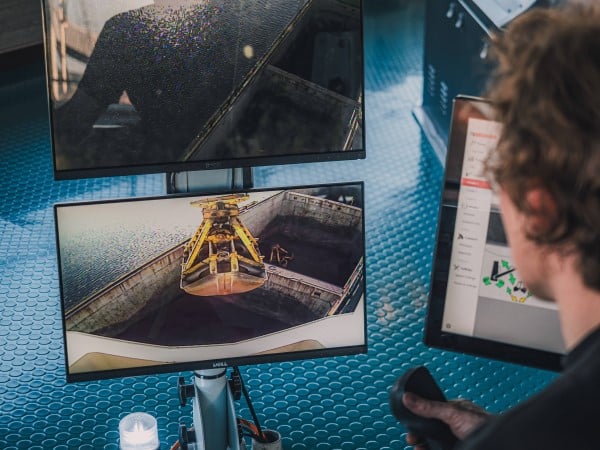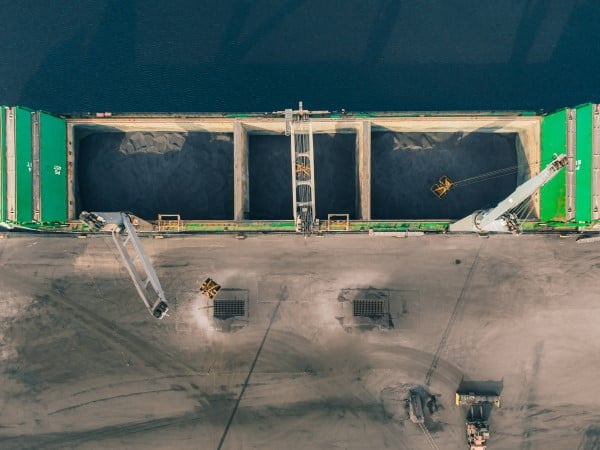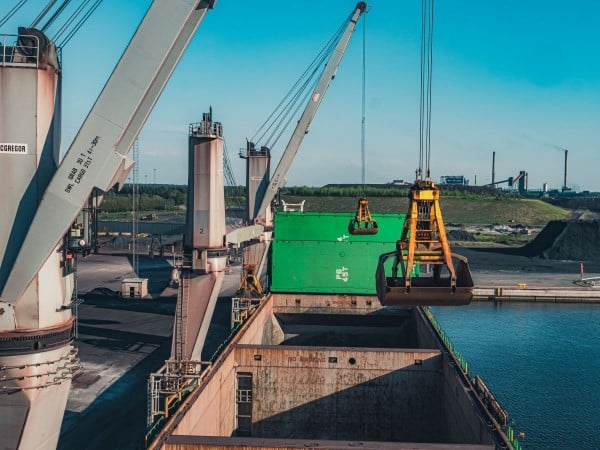MacGregor highly automated crane system proves optimal for ESL Shipping
23 Sep 2024 Reading time calculated textA highly automated crane system from MacGregor is helping ESL Shipping to optimise safety and efficiency while assisting crew with their workload in cargo-handling operations.
As automation becomes increasingly widespread in shipping, MacGregor is playing a leading role in bringing the benefits of artificial intelligence-assisted processes to cargo-handling operations. In September 2023, the company successfully demonstrated its robotic container-handling system for the European Union-funded MOSES and AEGIS programmes, with testing for a third EU-back programme, SEAMLESS, scheduled for 2026.
In the bulk-handling segment, MacGregor’s automated crane technology is already in commercial use. In 2018, ESL Shipping, the leading dry bulk cargo carrier for the Baltic Sea region, contacted MacGregor to discuss a project to implement driverless crane operations aboard its then-newbuild dry cargo ship, Viikki. The Finnish company makes extensive use of cranes in its daily operations and sought a solution for enhancing efficiency while reducing crew workload.

“We operate our cranes extensively – perhaps for 10 or 15 times more hours per year than the industry average – and our crew handle most of the driving,” says Mikki Koskinen, Managing Director, ESL Shipping. “While this has been a strategic asset to us, allowing us to load and discharge cargo independently, we recognised the need to balance our reliance on crew with working-hour regulations – without compromising operational efficiency.”
Koskinen explains that MacGregor was the natural choice to partner ESL on the project given the two parties’ long-standing relationship and MacGregor’s position as the market-leading supplier of automated cargo-handling solutions. “We knew that MacGregor had already developed technology that could be used for this kind of application,” he adds.
The five levels of automation
MacGregor categorises its automated crane systems according to five levels of automation/autonomy. At level one – ‘assisted’ – the human driver has full control of the crane, with the system’s ‘anti-pendulation’ and ‘anti-collision’ sub-functions helping the driver to perform their duties with optimal efficiency and safety.
At level two – ‘partially automated’ – the system uses its ‘auto-motion’ feature to execute driving tasks in a defined area, although the crane still requires constant monitoring. In addition to anti-collision and -pendulation sub-functions, MacGregor’s partially automated crane systems offer an ‘auto-grip’ feature whereby, through machine learning, the grab adapts to different material properties to prevent overloading. Level two also introduces a ‘bridge monitoring’ sub-function allowing crew to monitor all connected cranes from the vessel’s command centre.

With the technology behind levels four and five – ‘fully automated’ and ‘autonomous’ – still in development, level-three or ‘highly automated’ crane systems are the most advanced MacGregor currently offers.
Executing driving tasks in a defined area and requesting the human operator’s intervention when they reach their performance limits, level-three systems eliminate the need for constant monitoring. They introduce three new sub-functions. ‘Bridge control’ allows users to initiate the cargo-handling process and manually drive cranes from the bridge; ‘cargo scan’ displays the topography of material inside the hold to support more accurate picking; and ‘power-balance mode’ saves energy and is especially effective when used in conjunction with electric cranes.
“With our highly automated crane technology, companies benefit from increased safety and efficiency as the crane works within a defined framework to prevent collisions and minimise human error,” comments Mikael Hägglund, Sales Manager, Self-Unloading Systems and Cranes, MacGregor. “Maintenance requirements are also reduced as the smaller, smoother motions of an automated crane minimise wear and tear to the motors and mechanical structure.”
A successful collaboration
ESL vessel Viikki features three MacGregor electro-hydraulic cranes, each equipped with MacGregor’s highly automated crane system. Commissioning was delayed due to travel restrictions resulting from the Covid-19 pandemic, but the project was brought to a successful conclusion in 2023 following thorough onboard testing.
“ESL gave us time on board the ship to install the solution and test its operation,” notes Christian Nordin, Software Designer, Cranes, MacGregor. “We had performed simulations at our own facilities, but the ability to verify the technology on real cranes, on board a real ship, was invaluable, and we were able to finalise testing and commissioning last year.”

With the solution having now been in service for several months, ESL has adopted a hybrid approach to operating its cranes, says Timo Kosunen, Captain, MS Viikki: “We use either manual or automation mode depending on the situation. Manual mode is faster but requires three or four experienced operators, while automation mode allows one operator to run all cranes simultaneously. When not in a hurry, we use automation mode to discharge more cost efficiently.”
To optimise performance and safety, ESL also uses features and sub-functions of the highly automated system during manual operations. In addition to utilising the auto-grip function to help new operators learn how to avoid overloading with heavier cargoes, Kosunen says, ESL relies on the camera attached to the jib when manually discharging from other vessels: “We use manual mode in ship-to-ship operations where the environment is more dynamic, but we have found the camera on top of the jib to be very useful in these situations.”
Kosunen explains that when transferring cargo from one ship to another, ESL uses excavators positioned in the hold of the larger vessel, but because of the height difference between the two ships and the small hatch openings, the crane operator is normally unable to see inside the hold. “Thanks to the camera, the operator can see into the other vessel’s hold and has a visual of the excavator inside, which improves accuracy and helps to prevent damages,” he says.
However, according to Mikki Koskinen, the major benefit of the solution is that it allows ESL to make the best use of its crew’s limited working hours. “The automated system helps us to keep our operations running smoothly without encroaching on our crew members’ mandatory rest time,” he says. “This is critical in the Scandinavian market, where the focus on work/rest hours is particularly strong. Moreover, with the technology taking on much of the burden in cargo handling, crew can focus on other tasks on board the vessel, such as maintenance.”
Looking ahead, Koskinen says ESL is exploring the possibility of installing MacGregor’s automated crane system on board Viikki’s sistership, Haaga, which features the same MacGregor electro-hydraulic cranes, with all the necessary wiring already in place. “Beyond that, we will look to implement the solution on board our forthcoming vessels, which will be equipped with MacGregor’s fully electric cranes. We look forward to extending our partnership with MacGregor as we continue to reap the rewards of automated cargo-handling processes,” he concludes.
